This Pad Thai recipe is fast and easy to make with simple, authentic ingredients in under 30 minutes! Add shrimp, chicken, or tofu for a delicious vegetarian version. Video.
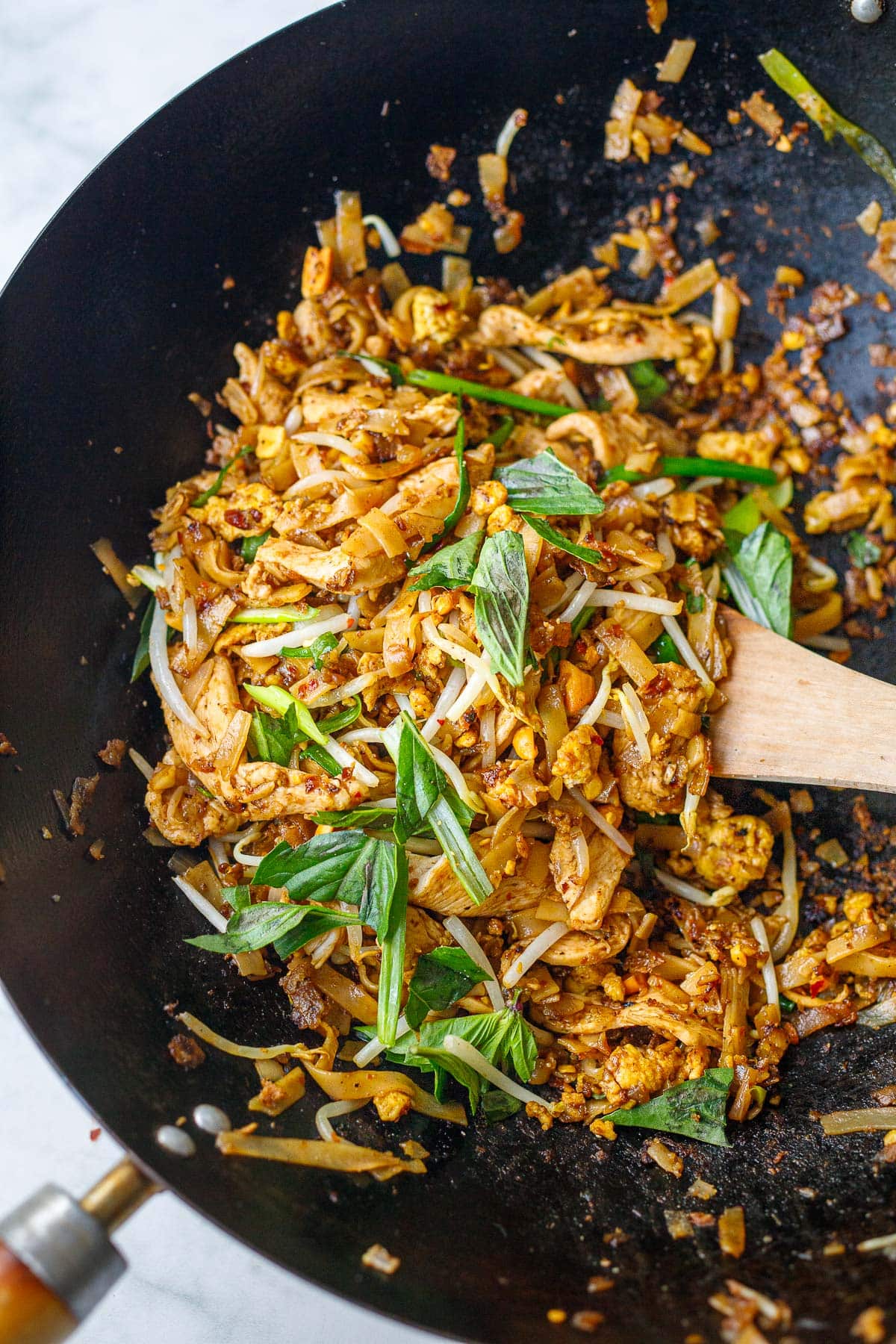
As a chef and caterer, I’ve cooked and eaten a lot of Pad Thai in my lifetime, both here and all throughout Thailand. We’ve captured the authentic flavor you’ll find in Bangkok while keeping the ingredients simple and the cooking fast and easy.
I may be biased, but I think this is the best Pad Thai recipe around—not overly sweet like many Americanized versions. You’ll find no ketchup or peanut butter in this recipe. But don’t take my word for it; just read all our great reviews!
But first, What is Pad Thai?
Pad Thai is a popular stir-fried noodle dish from Thailand made with rice noodles, shallot, garlic, scrambled eggs, and a protein, typically chicken or shrimp, in a flavorful, tangy, umami Pad Thai Sauce. It’s served with fresh bean sprouts, crushed peanuts, scallions and lime.
Why this Pad Thai Recipe is the Best!
- Balanced Flavor. Pad Thai sauce is a delicate balance between umami, sourness, and sweetness. Most American versions are way too sweet; this one is just right.
- It’s adaptable! This recipe can be made with chicken, shrimp, tofu and /or veggies! Gluten-free, vegetarian and vegan-adaptable.
- Quick and Easy– Once the ingredients are prepped, this takes 15 minutes of cooking time!
- Simple Ingredients. These accessible ingredients can be found in most grocery stores.
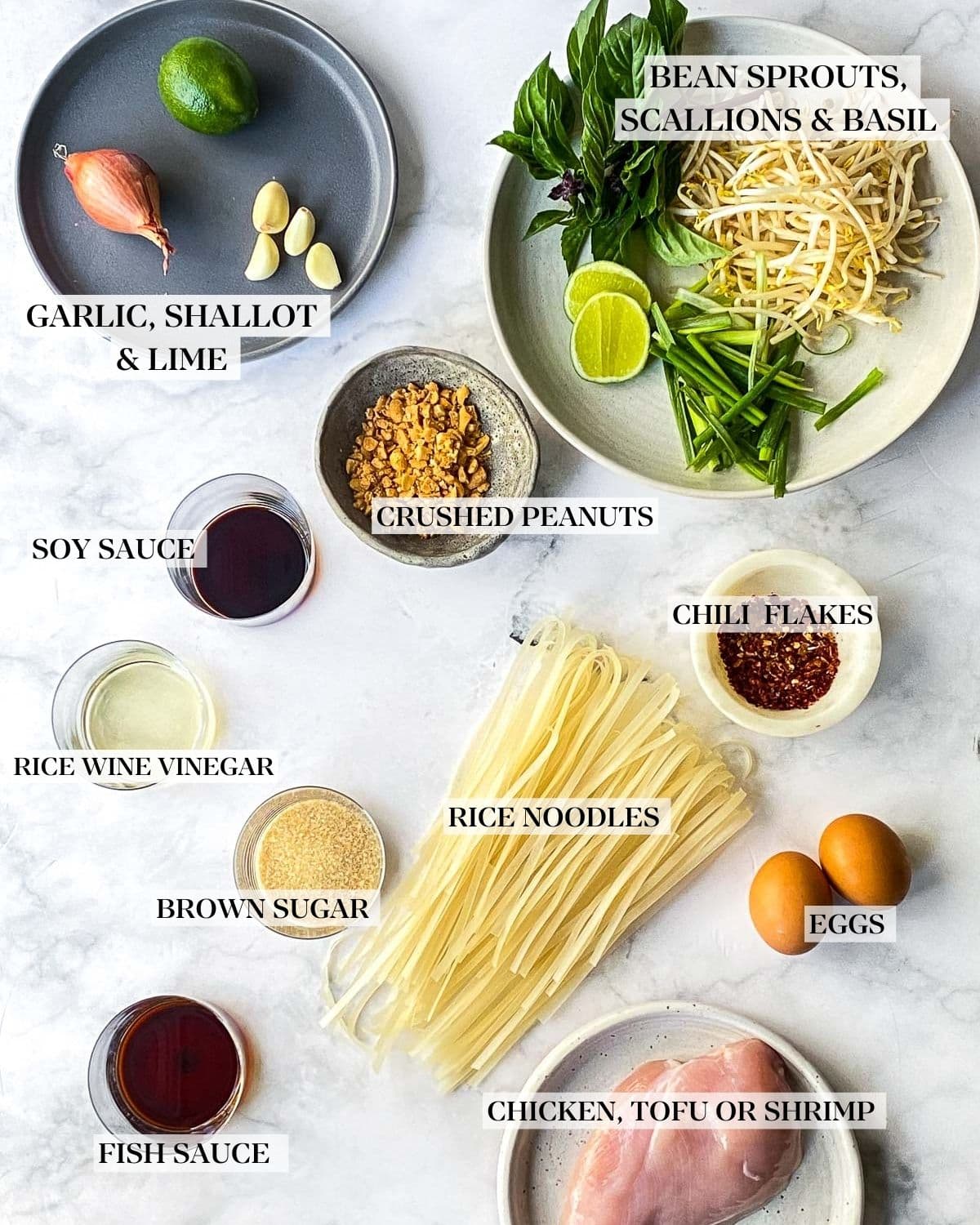
Pad Thai Ingredients
- Rice Noodles: Pad Thai is typically made with noodles called “rice stick”, which are rice noodles that are about 1/4 inch wide. Some brands are better than others- many fall apart when stir-frying. I have had the best luck with Thai Kitchen rice noodles. Make sure to soak the noodles, rather than boil, to prevent breaking.
- Protein: Add thinly sliced chicken breast, shrimp, or crispy Tofu, or leave out the protein and add stir-fried veggies. Extra firm tofu works best.
- Eggs: Traditional pad thai has scrambled eggs, vegans can leave this out.
- Garlic cloves and shallots: Shallots really elevate Pad Thai. I highly recommend shallots over onions if possible. Some versions use ginger, but in Thailand, they generally don’t.
- Fresh Lime Juice: adds acidity.
- Garnishes: The garnishes make Pad Thai, adding texture and flavor. Sliced green onions, crushed roasted peanuts, fresh bean sprouts, Thai chili flakes and lime wedges and if available, Thai basil, all elevate!
Pad Thai Sauce Ingredients
The secret to the best Pad Thai Sauce is the perfect balance of salty, sweet and sour. Our sauce has delicious umami and depth, while not being overly sweet with a lovely tang. Letting the sauce caramelize in the wok for just a few seconds, adds a lovely smokiness.
- Fish Sauce – Fish Sauce can vary in degrees of saltiness from brand to brand. I like Red Boat Fish sauce, or Thai Kitchen Fish Sauce (found at most grocery stores) best for this recipe. (*Vegans can sub our vegan fish sauce and soy sauce.) If you are new to fish sauce, keep in mind, it has a little “funk” to it. You can start off lighter and replace the rest with soy sauce.
- Tamarind Water or Rice Wine Vinegar – authentic Pad Thai is made with tamarind water and lime juice to give it the sour component, but feel free to use Rice Wine Vinegar and lime to keep things simple here. See recipe notes for using tamarind.
- Sugar – In Thailand, it is traditional to use palm sugar but we use brown sugar, coconut sugar or regular cane sugar to add sweetness. Note: Do not be tempted to cut back on the sugar, the Pad Thai will be too sour.
- Soy Sauce – adding a little soy sauce adds even more depth. You can also use gluten-free liquid aminos!
How to make Pad Thai (easy Instructions)
Step 1: Soak the rice noodles. Pour boiling water over the rice noodles let them soak until they are soft and pliable (about 5-6 minutes) but not overly soft; drain.
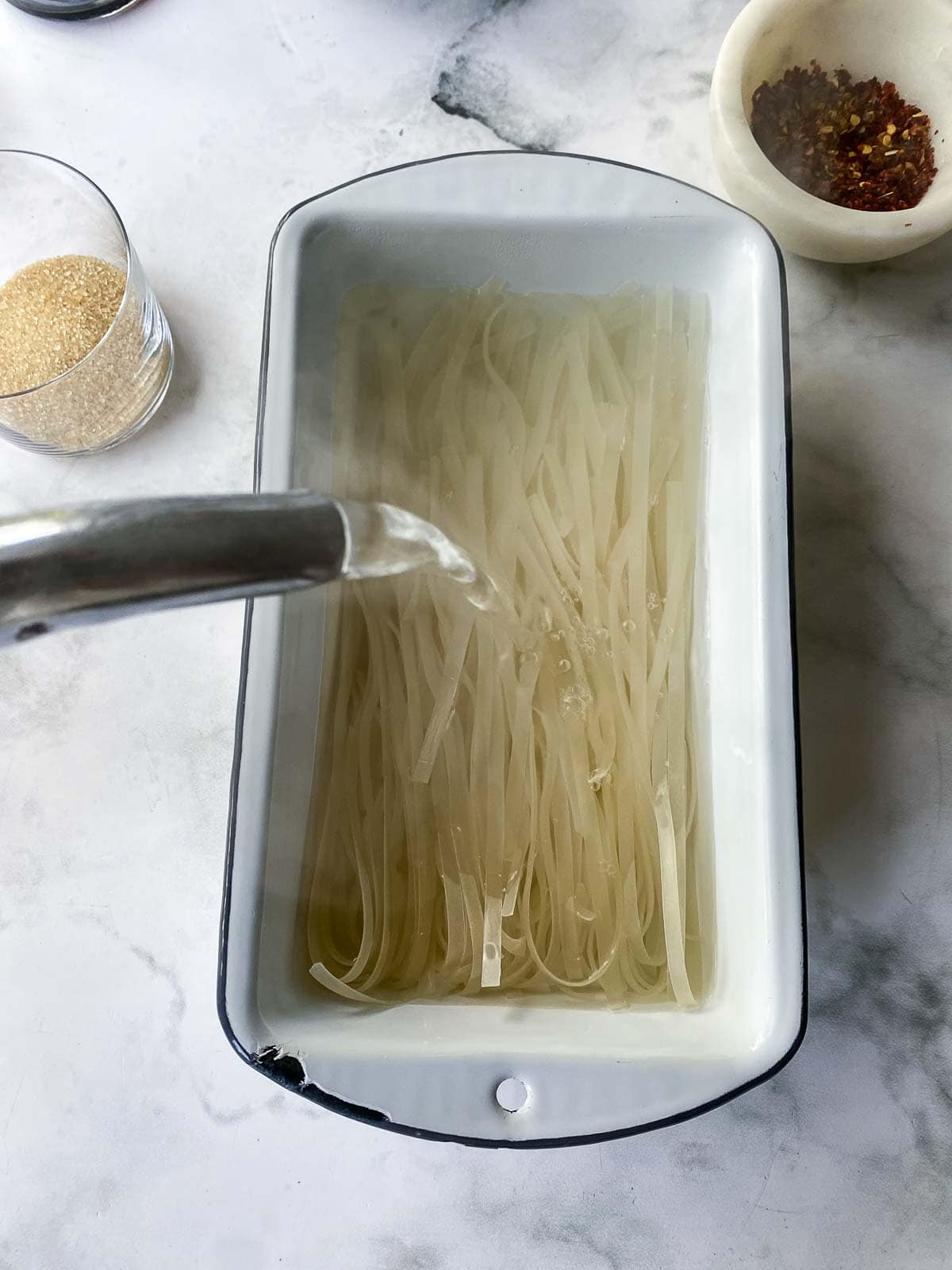
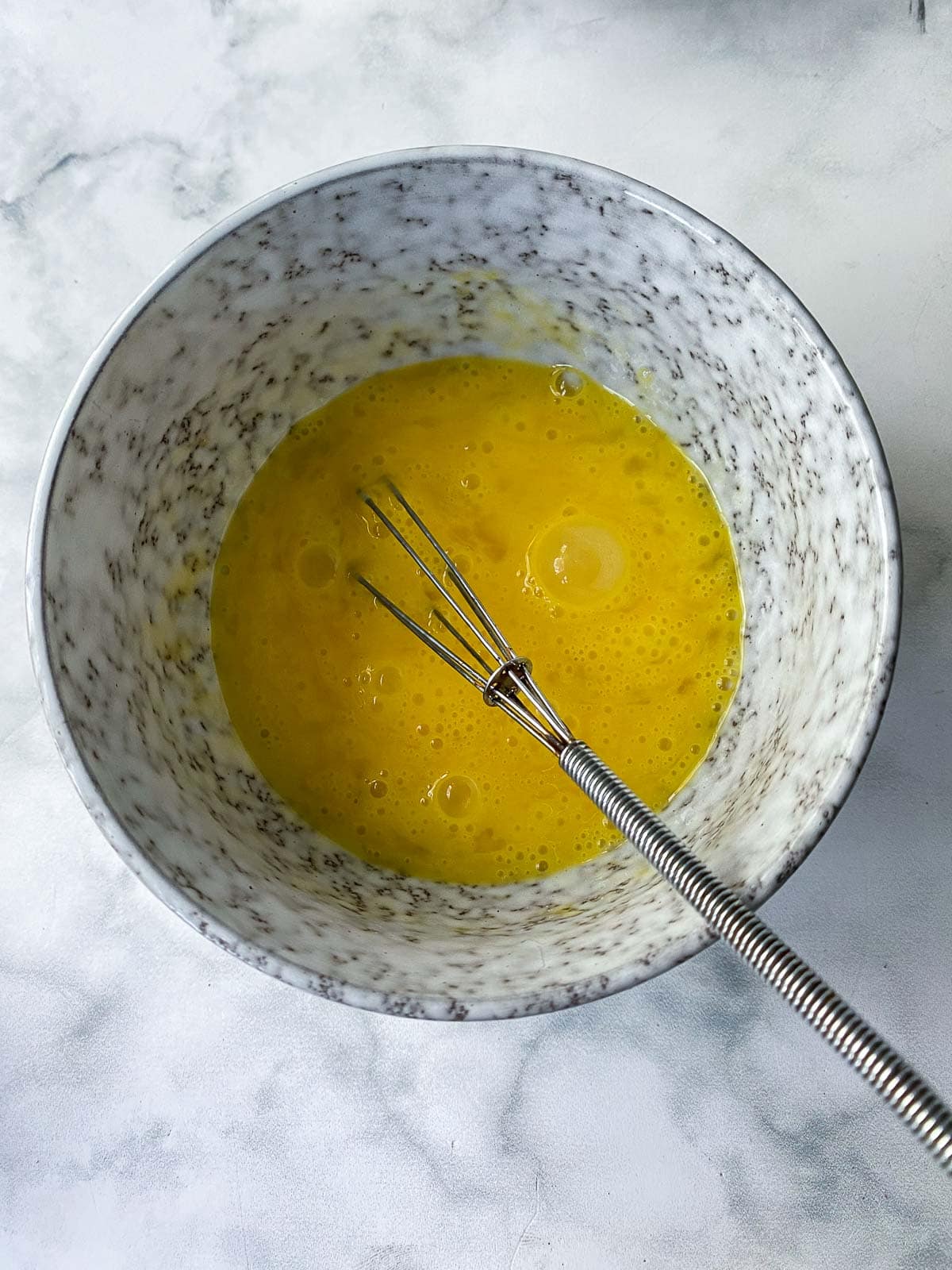
Step 2: Whisk the Eggs. Whisk the eggs in a medium bowl with a pinch of salt. Set aside by the stove.
Step 3: How to make Pad Thai Sauce. Whisk the pad thai sauce ingredients together in a small bowl- keeping in mind, there is a delicate balance between salty, sour and sweet, so if you alter one ingredient, you may need to adjust the others. Make sure the sugar completely dissolves.
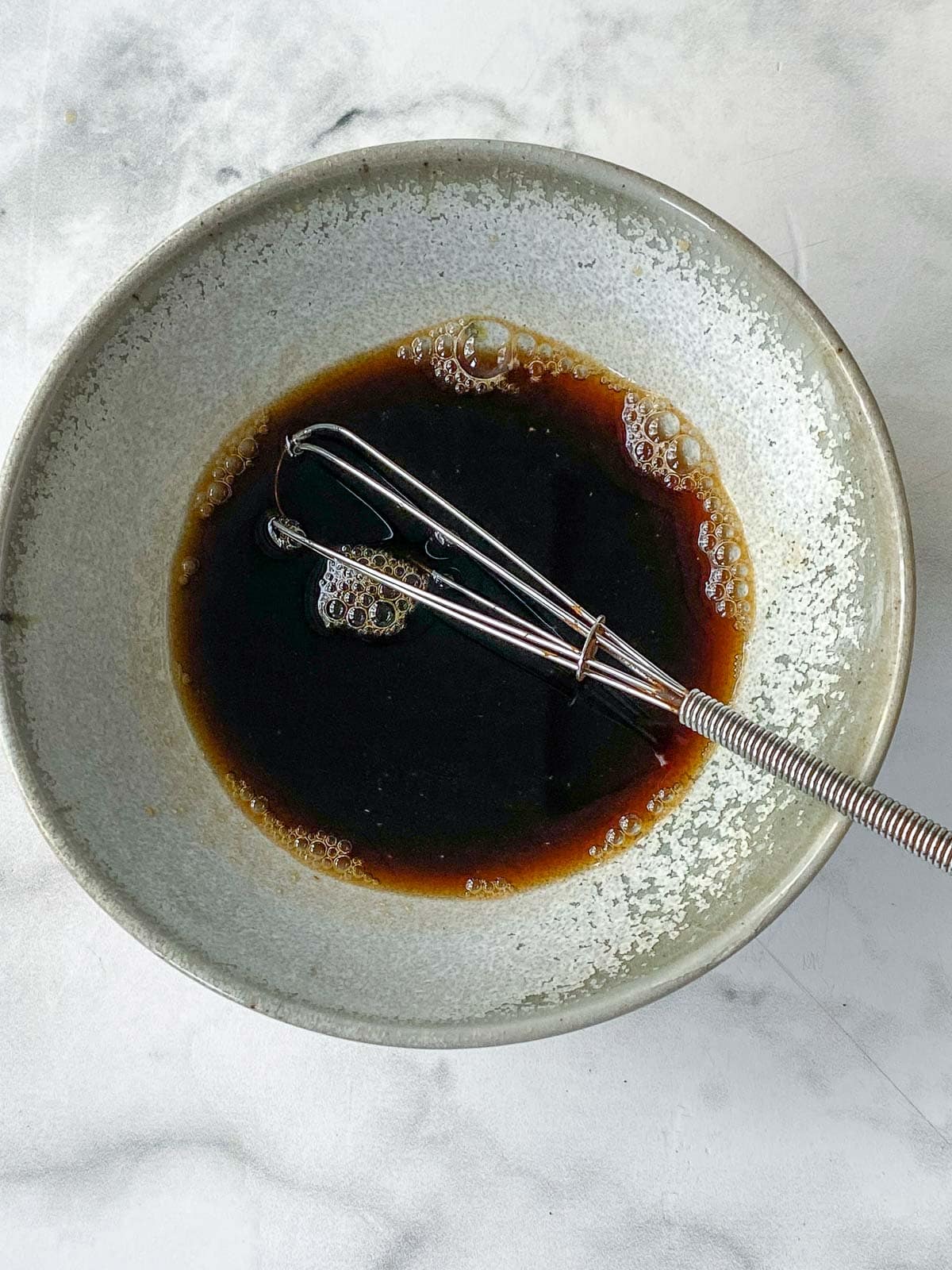
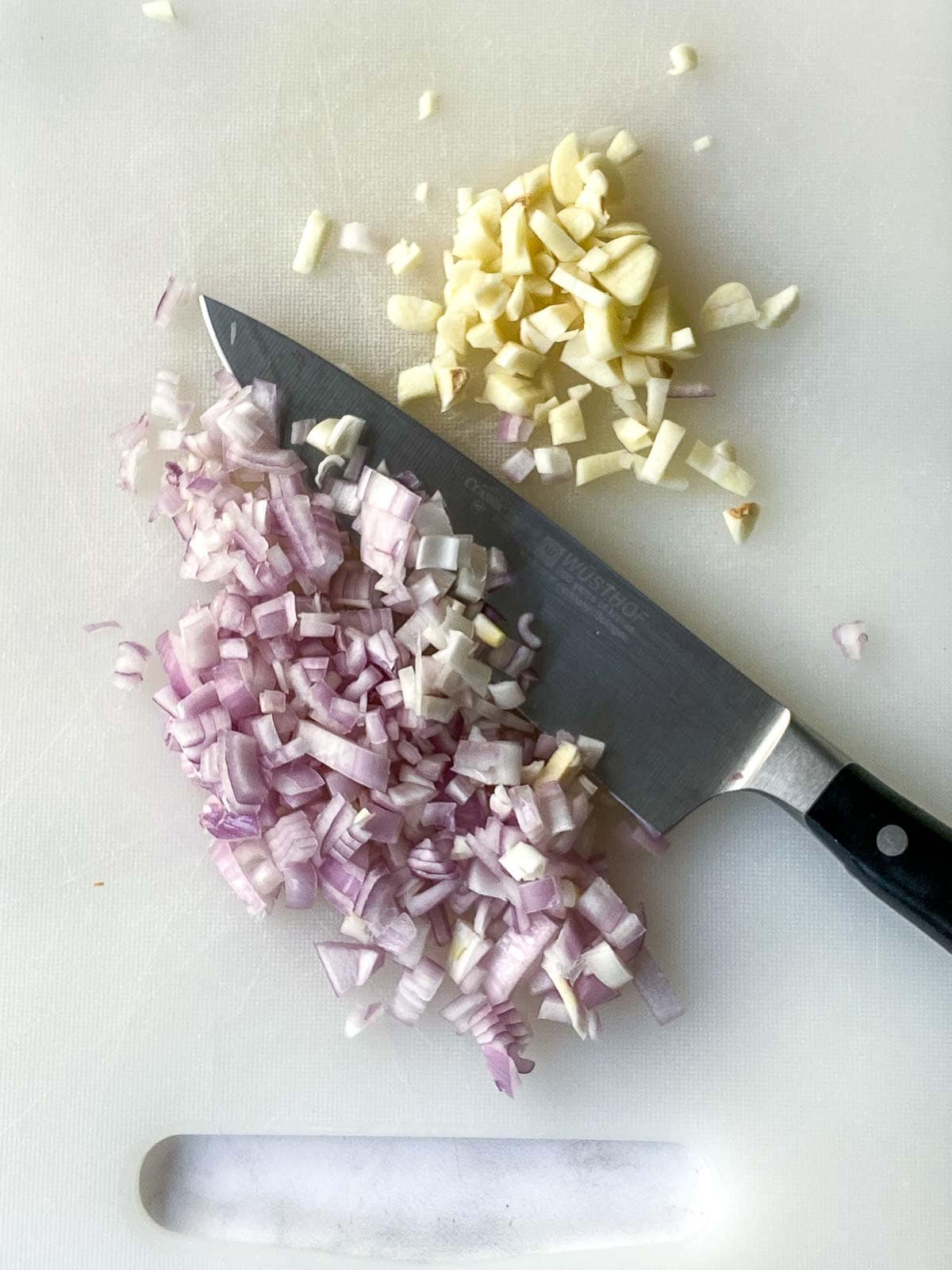
Step 4: Prep the Protein & Veggies. Chop the shallot and garlic finely and set aside. Slice chicken thinly across the grain (or peel and devein shrimp). If adding veggies, chop or slice them small, so they cook quickly in the wok.
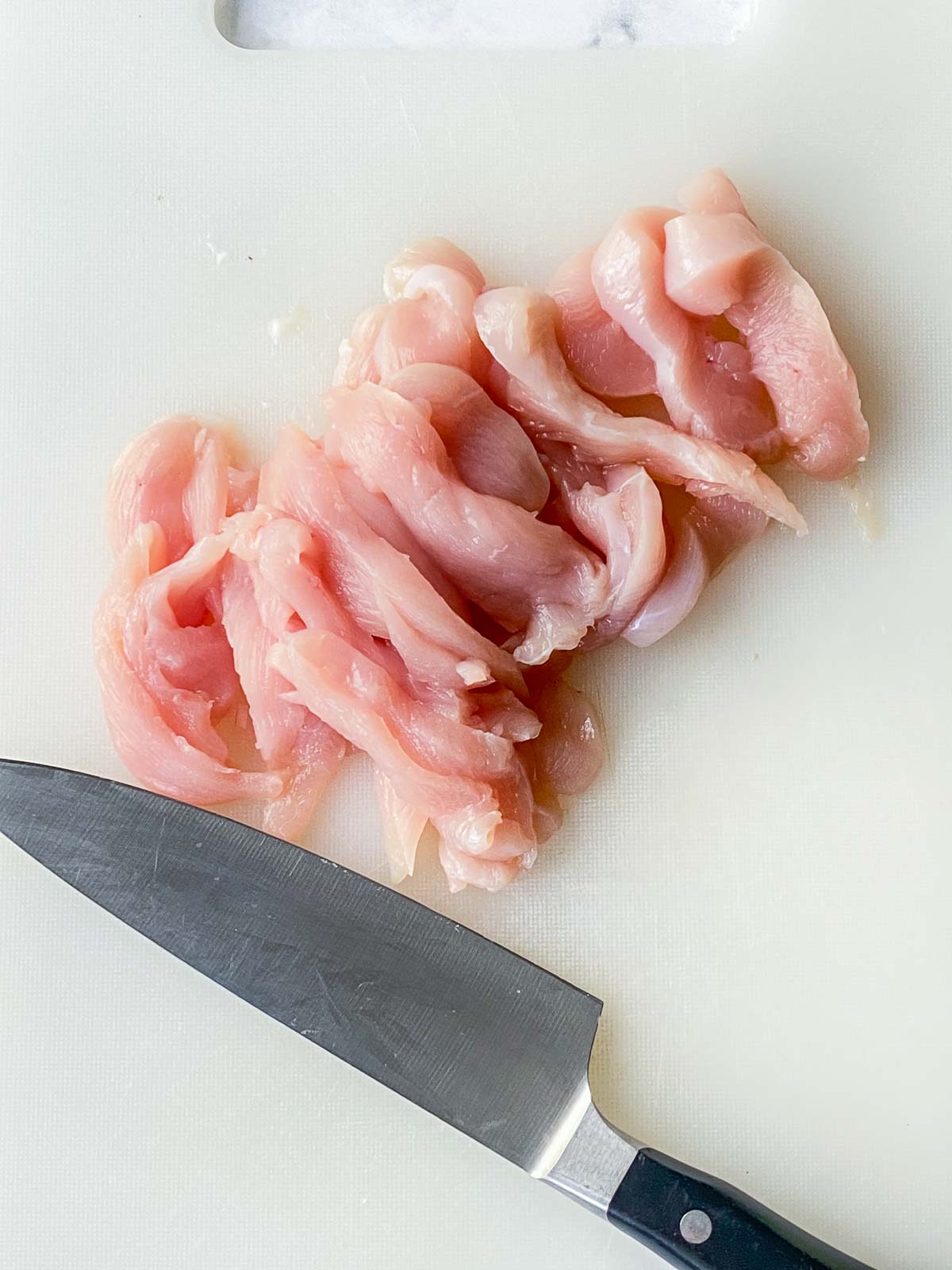
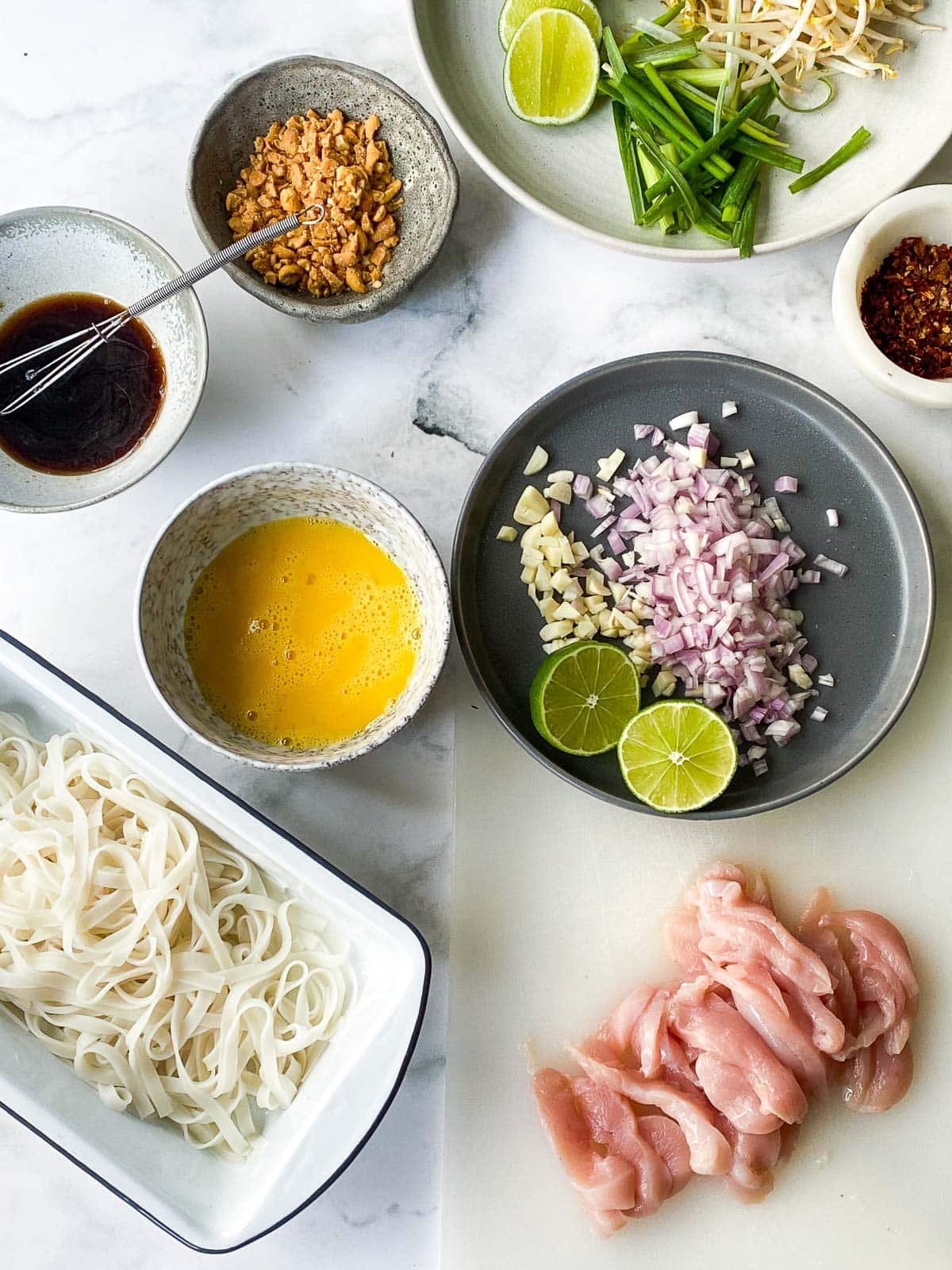
Step 5: Prep all your garnishes and have everything ready to go by the stove, keeping in mind the stir fry part will go quickly!
Step 6: Stir Fry! Season the protein with salt and pepper, and stir fry in a carbon steel wok until just cooked through and set it aside. If adding veggies, stir-fry these now and set aside as well.
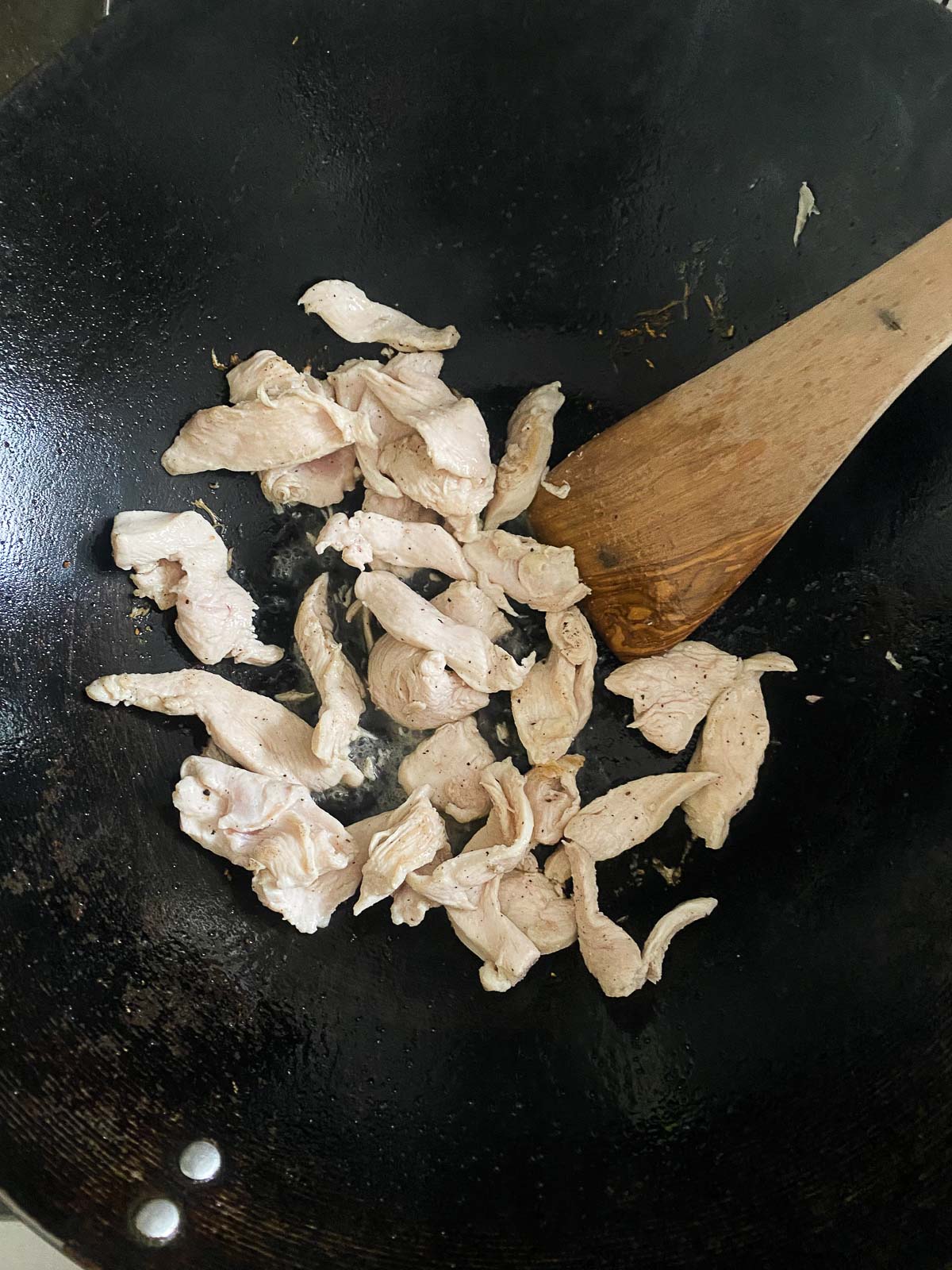
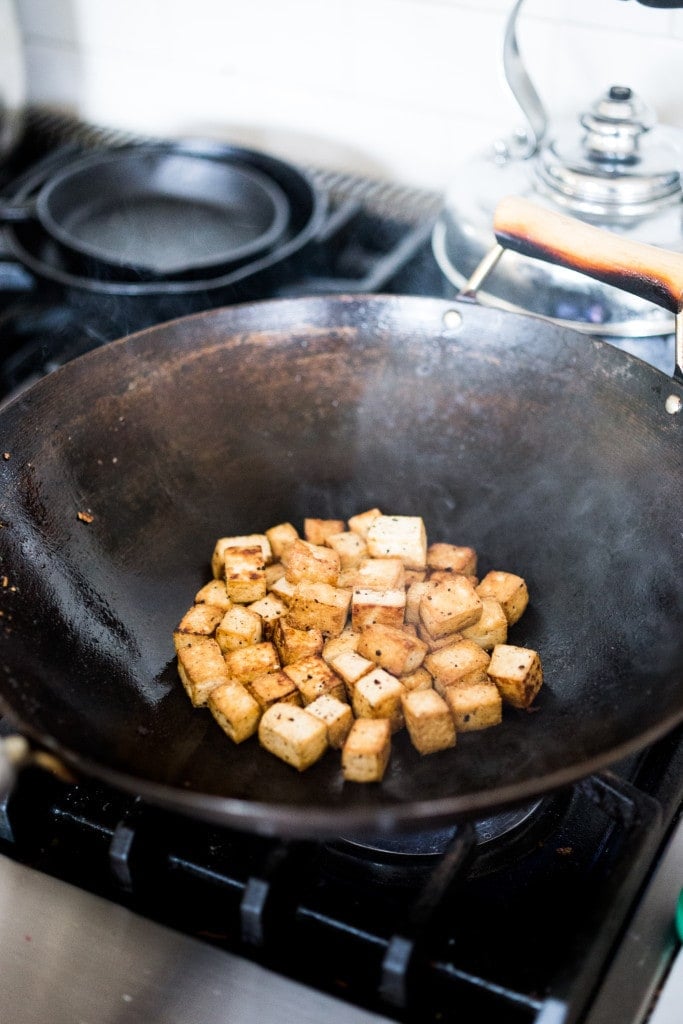
Add more oil to the wok and stir fry the garlic and shallots for just a couple minutes, scoot them over, add more oil if needed, and add the whisked the eggs, scrambling and breaking to bits.
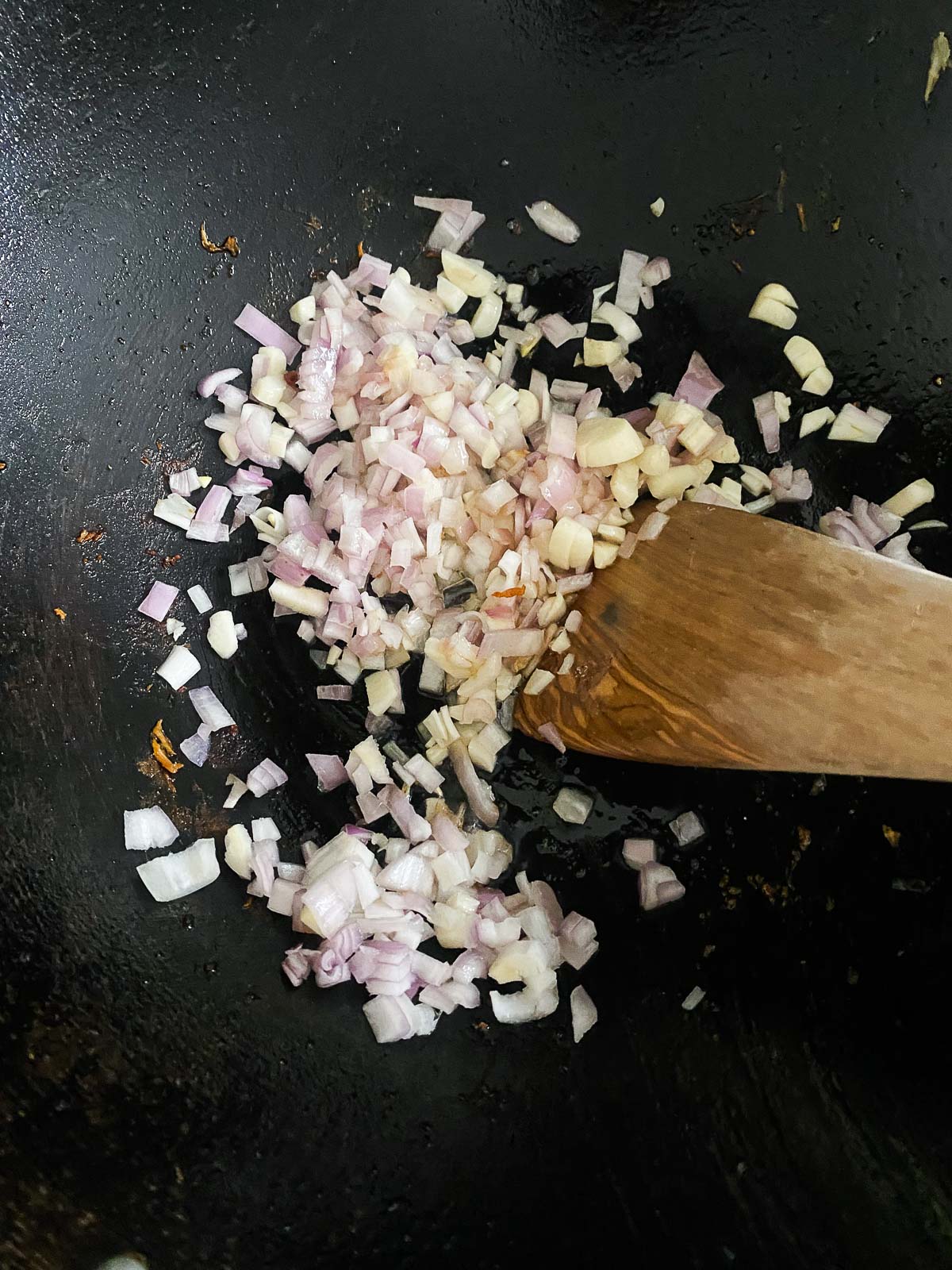
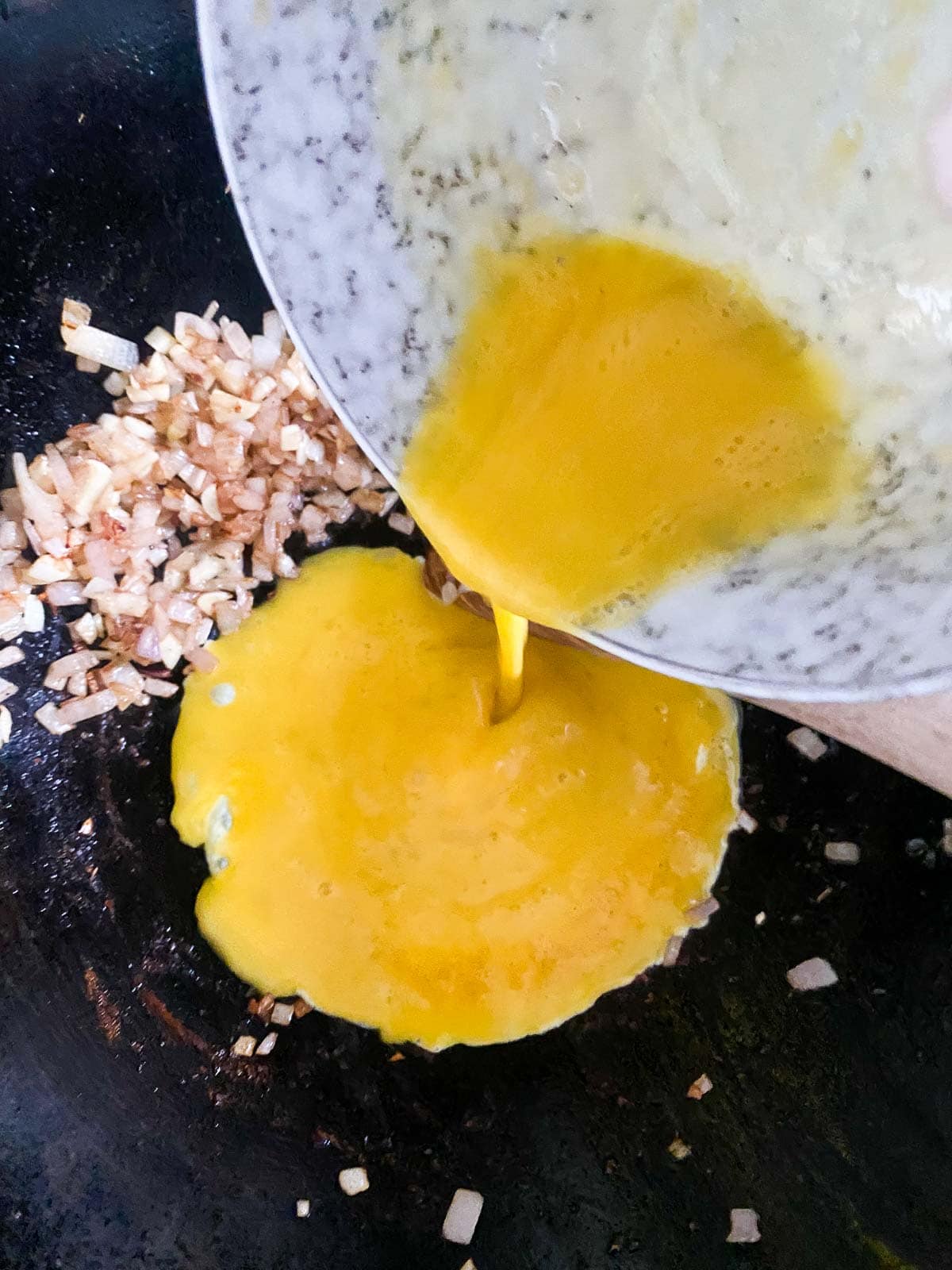
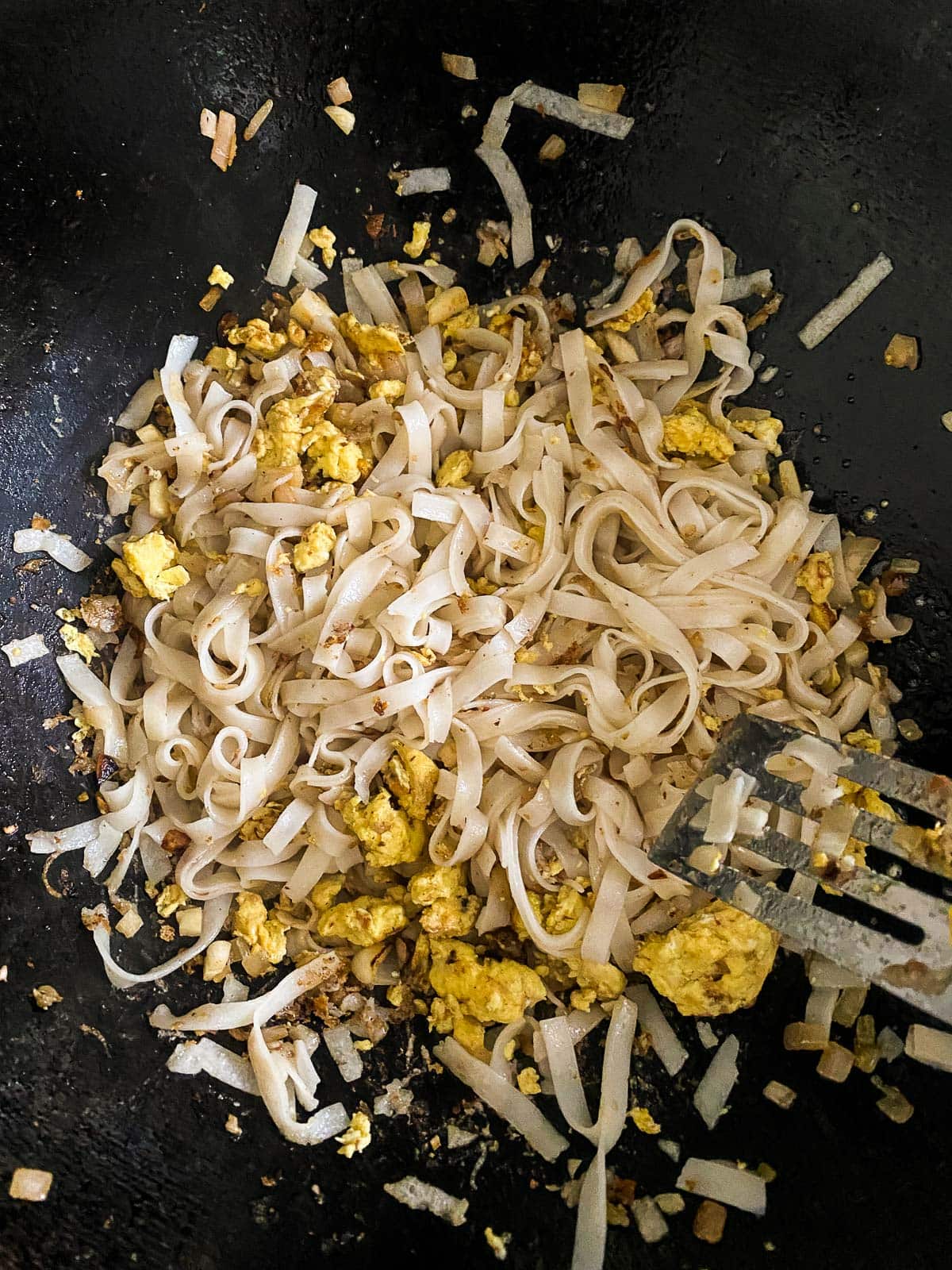
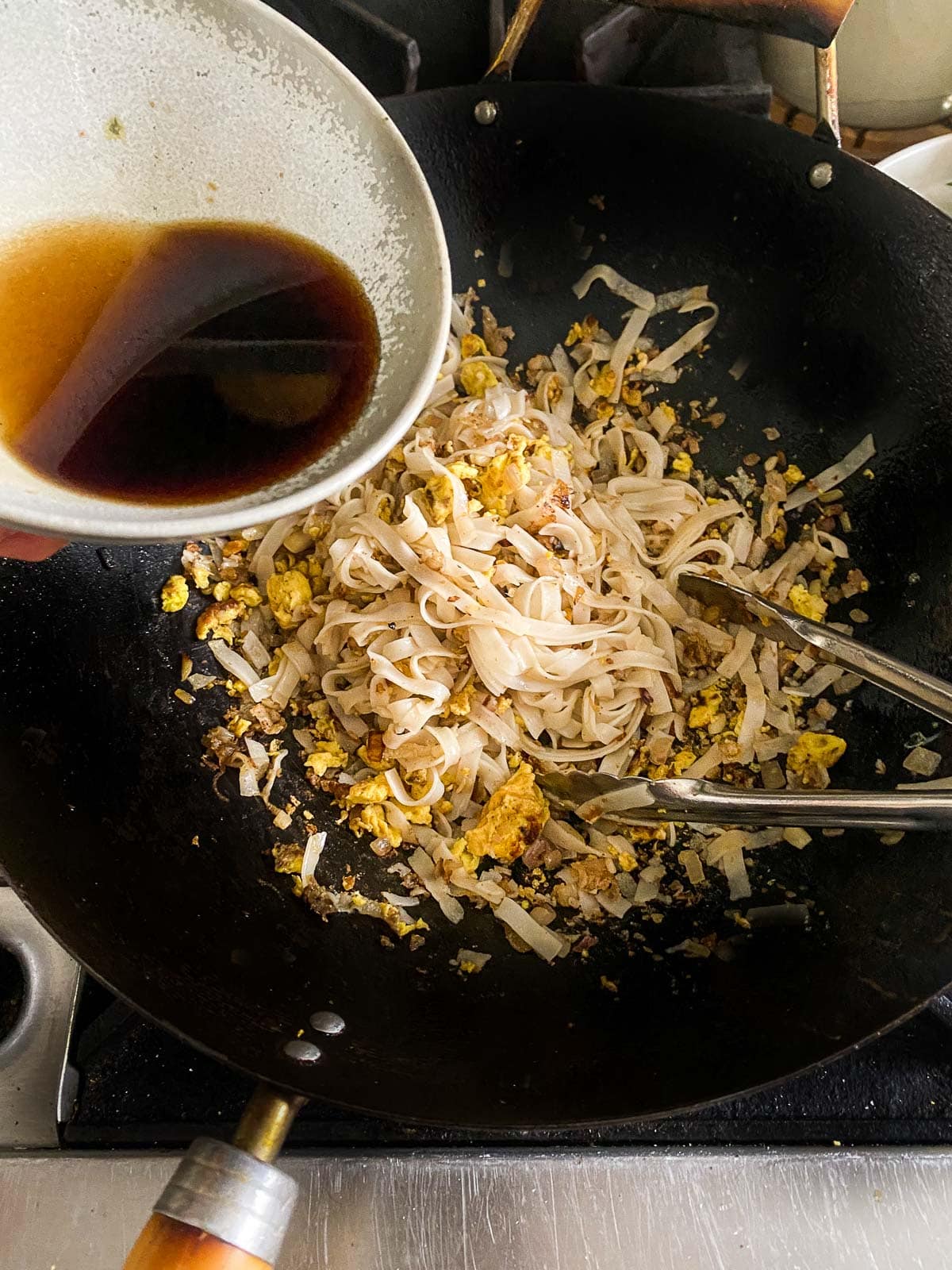
Scoot the eggs over and add more oil and stir fry the noodles, letting the noodles get a little crispy! Turn your hood on and pour in the Pad Thai Sauce. Let the sauce caramelize for 30 seconds, until you smell the sugar caramelizing. This will add great flavor!
Add back in the cooked protein and veggies, with some of the bean sprouts and scallions. Add a squeeze of lime.
*Taste and adjust salt, lime or sugar to taste. Find the perfect balance. See FAQ’s for troubleshooting the flavors.
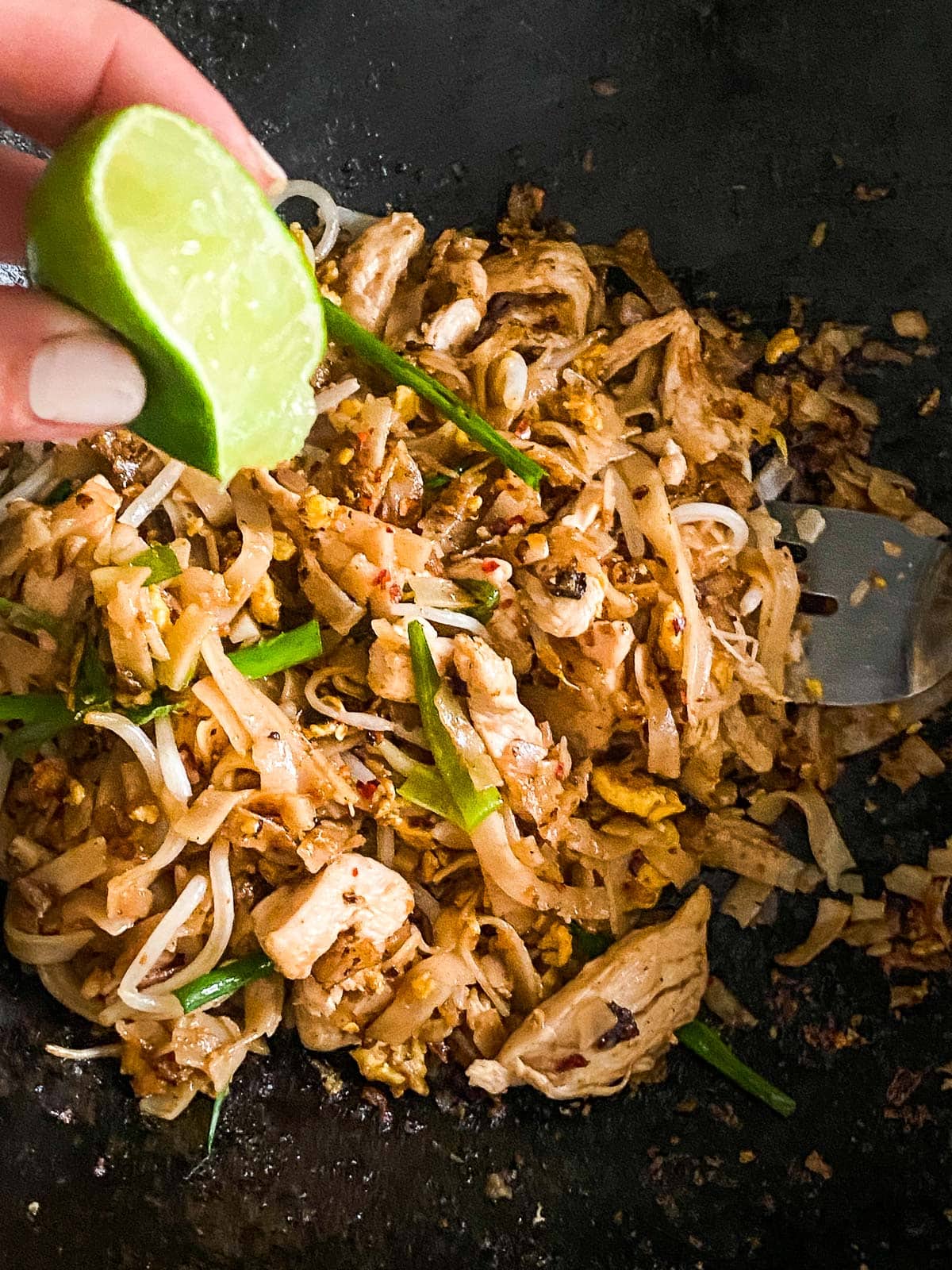
Step 7: Serve. Divide between 2-3 bowls and garnish with fresh bean sprouts, lime, wedge, crushed peanuts, chili flakes, scallions and basil. For extra heat, serve it with our chili garlic sauce!
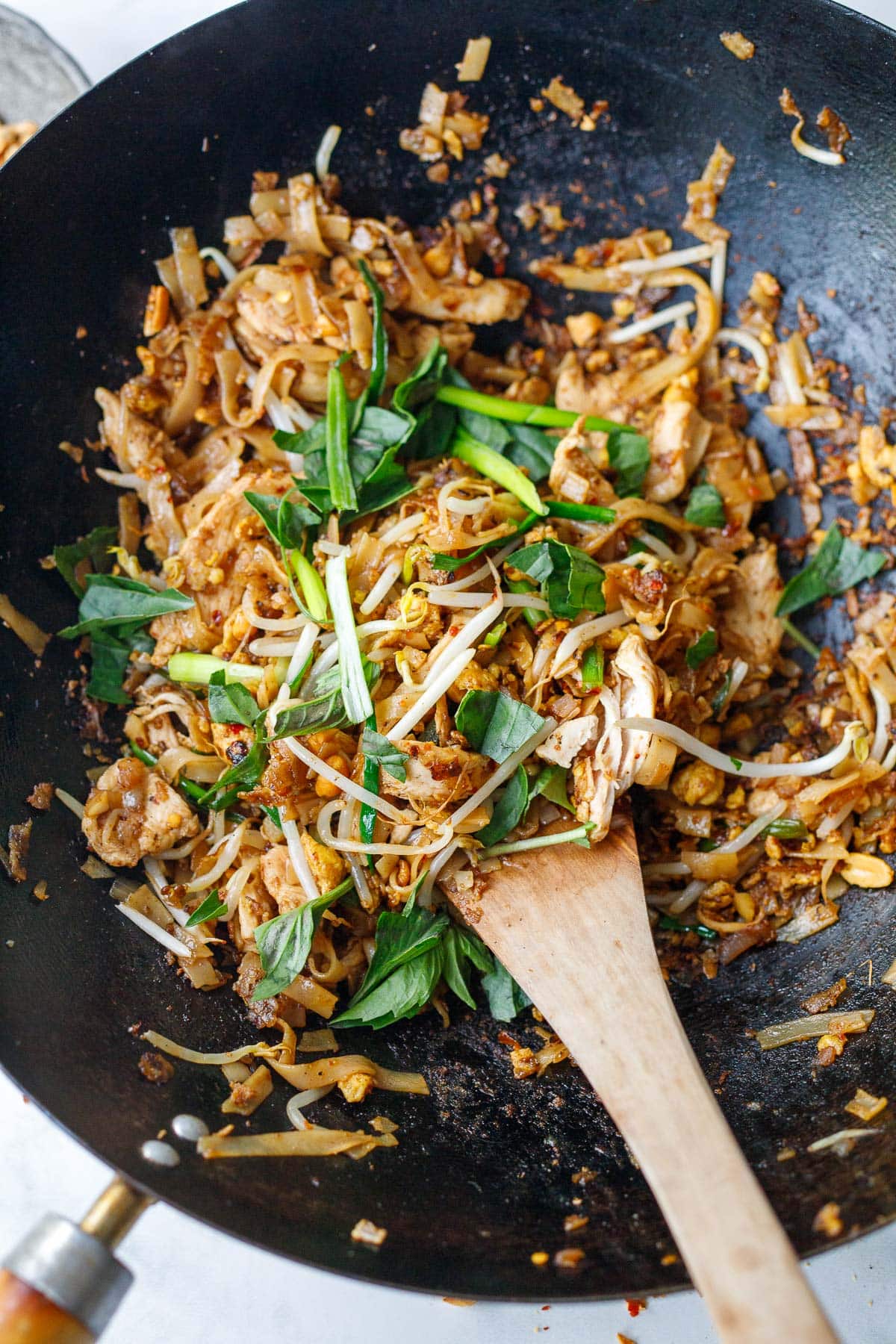
Pad Thai Noodle Tips
- Read the whole recipe through before you give it a go.
- Prep everything first, then place it near the stove. Cooking goes very fast here!
- Cut chicken very thinly to cut down on cooking time. Remember to cut across the grain, into ⅛ -¼ thin strips about two inches long.
- To lower calories, poach the chicken in a little salted water, until cooked through which just takes a couple of minutes. Then set it aside.
- Use shallot. Shallot adds so much flavor here- much more so than onion.
- Crispy noodles. Crisp up the rice noodles in the pan before adding the sauce.
- Let the Pad Thai sauce caramelize in the wok, before turning off the heat. This is the secret to the best flavor- a smoky sweetness we all crave!
Pad Thai Don’ts
- Please do not add ketchup or peanut butter. This is not authentic and takes away from the dish.
- Don’t use white vinegar instead of rice vinegar. White vinegar tastes way more acidic and it will be overly sour.
- Don’t skip the sweetener. you will lose the balance of the dish. You will end up with fishy, overly sour, salty Pad Thai that tastes terrible. TRUST ME.
- Don’t make too big of a batch. The noodles are stir-fried. You want the noodles to get slightly crispy in the pan, and the sugars to caramelize, giving them that incredible smoky flavor- this is difficult to achieve if making huge batches.
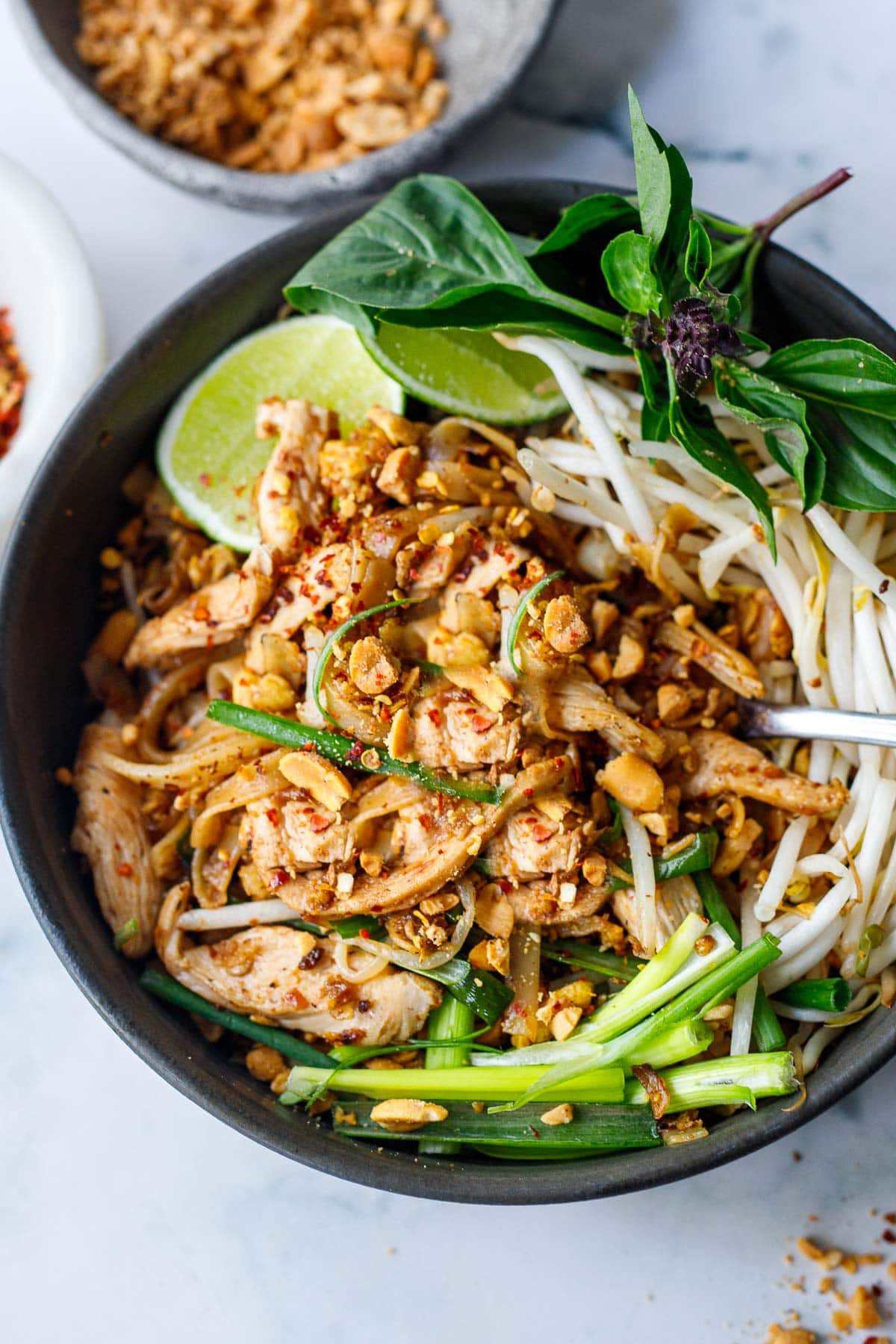
Serving Pad Thai Noodles
- Serve Pad Thai with lime wedges.
- Add fresh bean sprouts.
- Sprinkle with crushed roasted peanuts (or try this amazing Peanut Chili Crunch!)
- Add chopped scallions or Thai basil.
- Serve with Thai chili flakes, sriracha or chili paste for extra heat.
Storing Homemade Pad Thai
Pad Thai is best served right after it is cooked. Leftovers will last up to four days in an airtight container in the refrigerator. Reheat pad Thai in a skillet or wok, lightly stir frying.
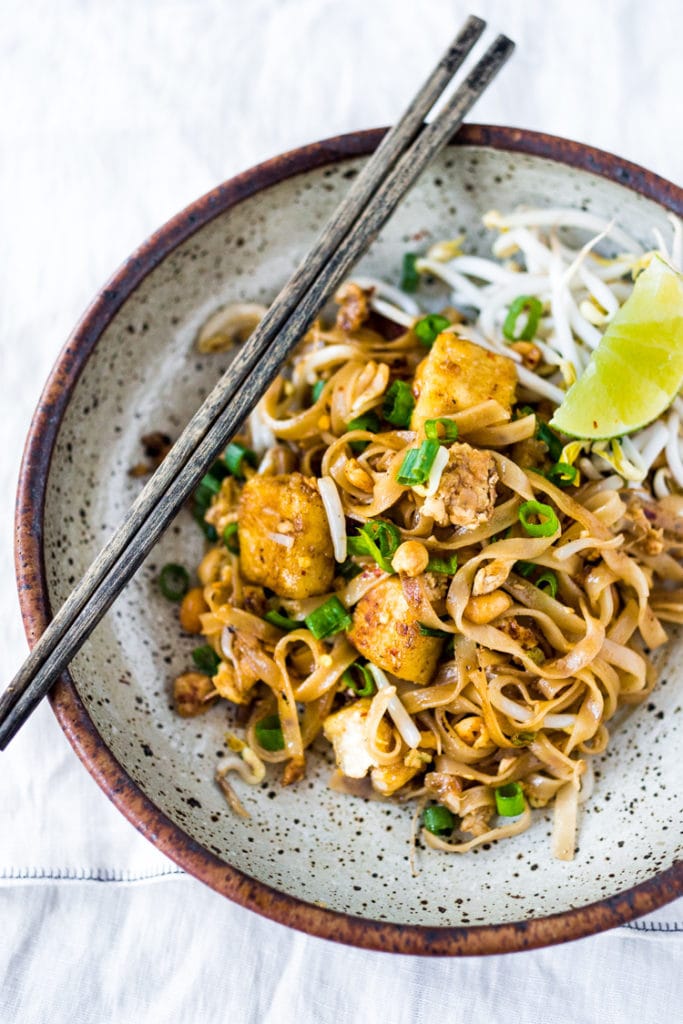
Pad Thai Recipe FAQs
Yes, Pad Thai can easily be made vegan. Use vegan fish sauce or soy sauce and crispy tofu as the protein, and leave out the eggs.
The secret to the best Pad Thai is not overcooking the rice noodles, using a very hot wok, cooking in smaller batches so rice noodles can caramelize, and having the perfect balance of flavors- not too sweet, not too sour, and not too salty.
Peanut oil adds the best flavor, while avocado and coconut oil both have a high smoke point. Both work well here. Any neutral high heat oil will work.
Any quick-cooking vegetables that can be cooked in a wok can be added to Pad Thai- asparagus, green beans, matchstick carrots, bell pepper and bok choy to name a few. Feel free to add steamed broccoli too!
Try adding a little more brown sugar and vinegar to balance it.
Add a little more brown sugar to balance it. White vinegar will do this- so always use rice wine vinegar, tamarind water or lime, which are all less acidic.
Add more acid ( rice vinegar, tamarind water or lime juice) to balance it.
What to serve with Pad Thai!
I hope that after you make this, you’ll think this is the best Pad Thai recipe you’ve ever had too! 😉 Haha! Let me know in the comments below! 🙂 Here are more of my favorite Fast, Easy Dinner Ideas!
Happy weekend.
xoxoxo
PS. It is my hope that through cooking, we not only learn new ingredients and techniques but also learn more about the culture and people from which the food we make originates. Cooking can be a way of celebrating all our unique and beautiful differences. I’d like to believe expanding our repertoire in the kitchen can also expand our hearts.
More Favorite Thai Noodle Dishes!
Love Thai Cuisine? Try…
- 33+ Easy Thai Recipes!
- Authentic Tom Kha Gai (Thai Coconut Chicken Soup)
- 30-Minute Thai Green Curry
- Thai Larb Salad
You may also love this Malaysian Char Kway Teow or Chickpea Curry!
More from Feasting At Home
How to make Pad Thai Noodles | Video
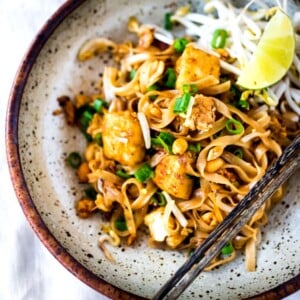
Easy Pad Thai (Chicken, Tofu or Shrimp)
- Prep Time: 15 mins
- Cook Time: 15 mins
- Total Time: 30 minutes
- Yield: 2
- Category: Main
- Method: stir-fried
- Cuisine: Thai
- Diet: Vegetarian
Description
An easy, 30-minute recipe for Pad Thai made with rice noodles, your choice of chicken, shrimp or tofu, scrambled eggs, and an incredible “not too sweet” Pad Thai Sauce. Makes 2 large servings. Watch the video!
Ingredients
- 4 ounces rice noodles
- 3 tablespoons peanut oil, divided ( or use avocado oil, or coconut oil)
- 8 ounces chicken breast, tofu or prawns (peeled and deveined)
- salt and pepper to taste
- 1 large shallot, finely diced (much better than onion here)
- 4 fat garlic cloves, roughly chopped
- 2 eggs, whisked with a fork with a generous 3-finger pinch salt if vegan, leave it out)
- 1 lime
- 1 1/2 cups bean sprouts
Pad Thai Sauce:
- 3 tablespoons fish sauce (see notes- or use vegan fish sauce)
- 3 tablespoons brown sugar (or coconut sugar, palm sugar, or regular sugar) see notes
- 3 tablespoons of rice wine vinegar (or tamarind water– see notes) do not sub white vinegar, it will be too sour.
- 2 teaspoons soy sauce (or GF liquid aminos like Braggs)
Garnish:
- lime wedges, fresh bean sprouts, chili flakes, chopped scallions, roasted peanuts, Thai basil
Instructions
- Soak the rice noodles. Place rice noodles in a shallow pan and cover with boiling water for 4-7 minutes, stirring occasionally (so they don’t stick together) until al dente; drain, rinse with cold water to stop cooking. They don’t have to be totally soft, just bendy and pliable.
- Whisk the two eggs in a bowl with a fork and add a generous, 3-finger pinch of salt. Set aside.
- Make the Pad Thai Sauce: whisk fish sauce, rice vinegar, brown sugar and soy sauce. (see notes) in a small bowl. Set aside.
- Prep the protein. Chicken: slice chicken into very thin strips and season with salt and pepper. Crispy Tofu: Blot tofu with paper towels pressing down firmly. Cut tofu into ¾ inch cubes, sprinkle with salt and pepper, and for extra crispy, dredge in a little corn starch. Shrimp: season with salt and pepper.
- Cook the protein: Heat 1 tablespoon oil in a large saucepan or wok, over medium-high heat. Sear the seasoned chicken, shrimp or tofu until cooked through. Set aside,
- Stir Fry: Gather your chopped shallots and garlic, whisked eggs, cooked noodles, cooked protein and Pad Thai Sauce around the stove. Heat a little more oil in the wok over medium heat, add shallot & garlic and stir fry 2-3 minutes. Scoot the shallot mixture to the side, add more oil, and pour in the eggs. Scramble and break them apart into little bits, and move them to the side. Add more oil, and the noodles, stirfry 2-3 minutes until noodles are soft and pliable and even a little crispy.
- Pour in the Pad Thai Sauce (turn hood on) stir everything together and cook 1-2 minute, then add the cooked protein and stirfry for a few more minutes. Just as you start to smell the sugar carmelizing, you are there! Squeeze with a little lime juice. Turn off heat.
- Taste. Adjust salt, lime, heat and sweetness to your liking; add salt, or soy sauce for more depth if you like, a squeeze of lime juice, chili flakes, or a pinch of sugar to taste.
- Toss in 1/2 the bean sprouts and roasted peanuts (or serve on the side) and sprinkle with chili flakes and scallions. Give one more toss and serve immediately. Divide among two plates.
- Garnish with more bean sprouts, fresh scallions, cilantro or basil, chili flakes, lime wedges and roasted crushed peanuts. Or make this Peanut Chili Crunch!
Equipment
Notes
Fish Sauce: If you are not accustomed to fish sauce, or are using a brand you haven’t tried before (some are fishier than others) feel free to go lighter on the fish sauce– like 2 tablespoons. If going with less, replace it with soy sauce.
Poach the chicken. An easy way to cut back on the oil in the recipe is to poach the thinly sliced chicken breast in a little salted water, or broth for a few minutes, until cooked through. Drain and set aside. The thinner you slice the chicken the faster it will cook.
Tamarind: If using tamarind paste (instead of rice vinegar) make tamarind “water” by mixing 1 tablespoon tamarind paste with 2 1/2 tablespoons hot water. If using tamarind “concentrate” mix 1-2 teaspoons with 2 1/2 tablespoons water. Use tamarind water in place of the vinegar. Using tamarind is more authentic but not everyone has access to it. Tamarind is extremely sour so if unfamiliar, go light. You can always add more lime to taste.
Nutrition
- Serving Size: 1 ½ cups
- Calories: 409
- Sugar: 14.3 g
- Sodium: 1134 mg
- Fat: 14.2 g
- Saturated Fat: 2.1 g
- Carbohydrates: 47.4 g
- Fiber: 1.1 g
- Protein: 20.5 g
- Cholesterol: 165.4 mg
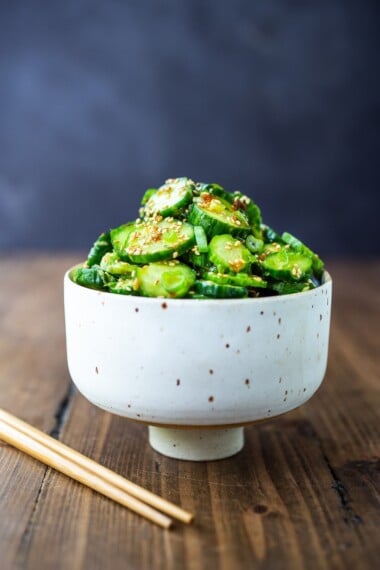
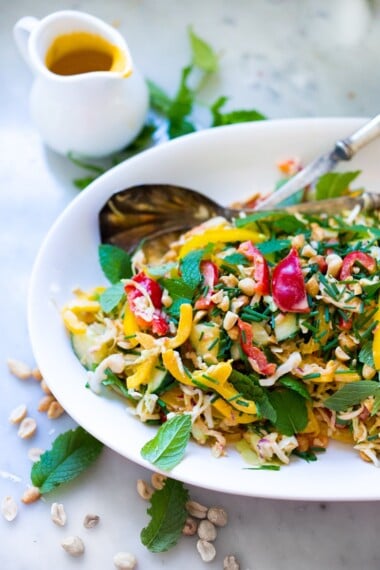
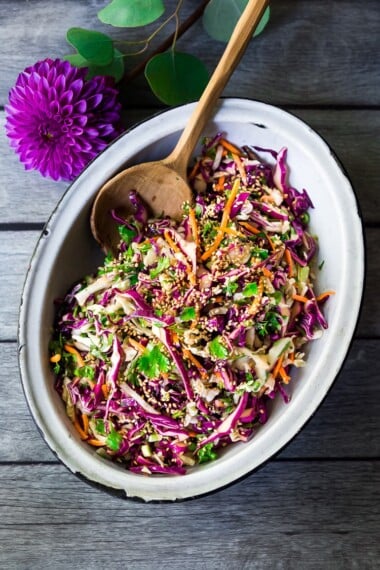
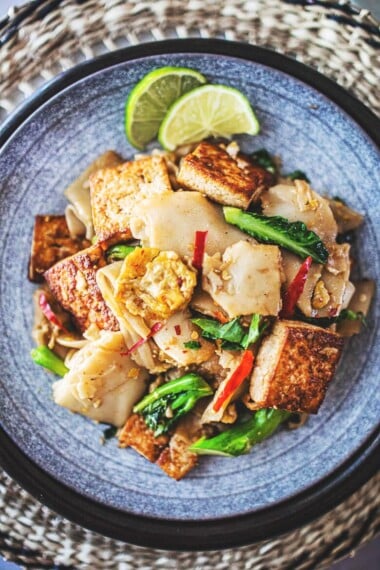
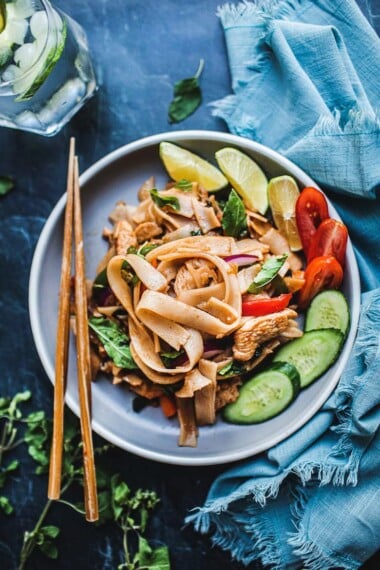
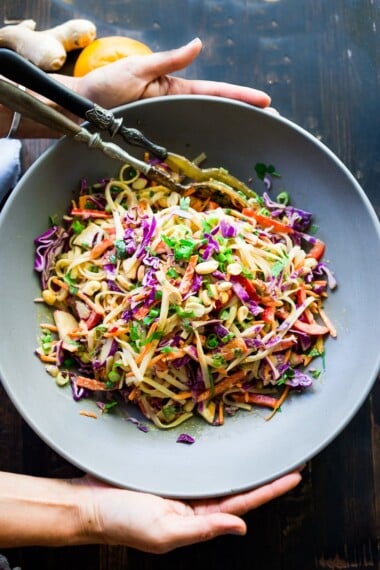
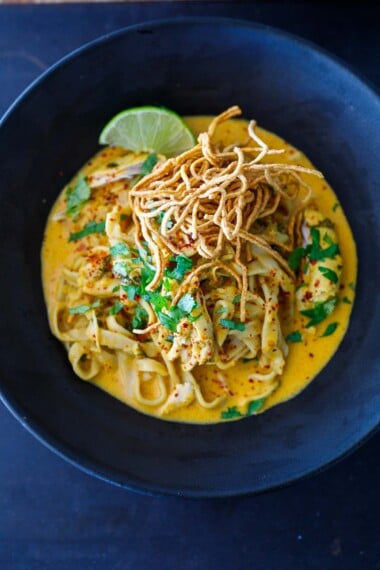
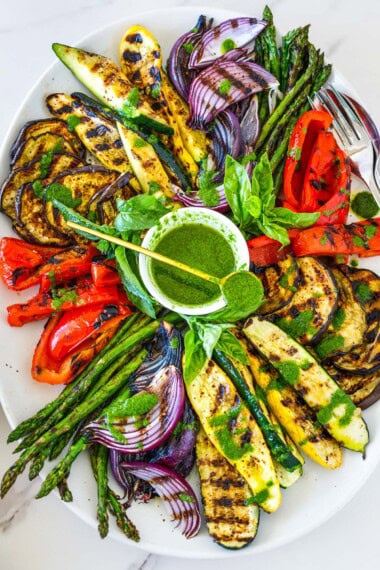



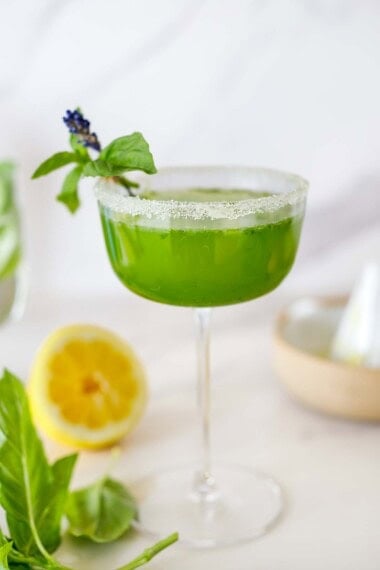
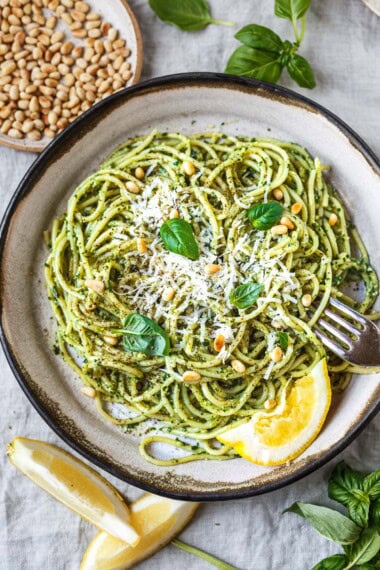
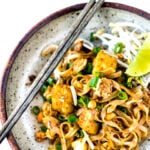
THIS IS THE BEST PAD THAI RECIPE EVER!! it tastes like my favorite pad thai from home & it was so easy to recreate at college in my kitchen!! thank you for this easy and insanely DELICIOUS recipe !!
Great to hear Faith!
Wonderful!!!
Delicious, it worked out great and tastes authentic.
Great Todd- thanks!
Am on a STRICT LOW CARB DIET but adore pad thai!!! This sounds crazy but can I sub another veggie for noodles like zucchini spirals??? I know it’s not the same but could the taste pass???????
Give it a try! Why not?
This is delicious and I didn’t really have to tweak anything. I am amazed how easy it is to make and more importantly clean up while cooking. This makes my wife happy.
Thanks Bryan- glad this worked for you, and your wife. 😉
Delicious! I used chicken and it was A1. Highly recommend!
I make this regularly now. Never thought I could make pad thai, which tastes this good, on a weekday! Great recipe.
thanks so much Rach!
Best pad Thai I’ve ever made!! It’s in our regular rotation now-everyone loves it. Any tips for making this in an instapot??
Glad you like this. Can’t picture this in an instant pot, I feel like it needs the wok to get the noodles the right texture here!
I have tried making so many pad Thai recipes from home and they never taste good. This is the best pad Thai recipe I’ve ever made. It is absolutely DELICIOUS and tastes just as good as you’d get in a Thai restaurant. Thank you for sharing <3
thanks so much Lauren! Great ot hear!
Is there anything else that can be used instead of the vegan fish sauce (or fish sauce)? I am deathly allergic to mushrooms (and fish sauce), but everyone in my family loves Pad Thai and I would love to be able to enjoy it (or at the very least a close approximation of pad thai) with them. Thanks!
I would replace it with soy sauce, but maybe instead of 3 tablespoons go with 2 tablespoons (plus the other teaspoon).
Amazing sauce!!! I added a tsp of garlic chili sauce and put the ginger and garlic right in the sauce. Soooo good! Oh, I used the tamarind.
Perfect Kimberly! Gald you liked it!
Once upon a time, I had a pad thai that I just loved. After a while, I gave up trying to find to duplicate that one (or at least how I remembered it). Never would I have thought that I would make the pad thai that would be BETTER than the one I remember.
Quite simply, this is the best pad thai that I have ever eaten. Even my how-can-you-stand-that-fish-sauce wife loves it. THANK YOU for the recipe. You can bet I will give your others a try.
I love this Richard! I am so glad you both enjoyed!
You were right … the fish sauce is just … wow. But it mellowed and I lived this dish. It was even better the next day. I think next time I will cook the egg in a separate pan because it blended with the veggies and changed the texture but it still tasted great.
This was outstanding! Thank you 🙏
Awesome Christian!
I loved it! I made it a little bit ago & it was delicious 😋 It was simple, quick and easy to make!! This will be my go to recipe from now on!
Yummy and easy! I added shredded cabbage, snap peas, and beet greens fresh from the garden, so good!
Perfect Amy!
The recipe itself is delicious! I ruined mine with the noodles, though. The brand I used (Lotus) were so gummy and stuck together they were inedible. I tossed them and made a second batch using the package directions (boil for 5 mts) but it was the same thing. Any recommendations on noodle brands?
oh no, I’m sorry about that. I have one linked in the post that seems to turn out well. Honestly I just play with different brands that I pick up form the Asian market. Make sure noodles are about 1/4 inch in width.
Delicious!! The whole family loved it, thank you!
Great to hear Marion!
Probably a no brainer but Australian’s, use the US tablespoon quantities for sauce (15ml) not the Australian quantity (20ml).
I didn’t know they were different!
very good
Thank you for this! It saved my takeout order. I didn’t want to cook to begin with but my pad thai dinner order from a local Chinese joint was just terrible. It was unbalanced (too sweet) and lacked color and texture.Though I went to bed unsatisfied, thanks to this recipe, I was able to make your sauce to fix the flavor, added some spring onion and peanut and have a great lunch with minimal effort.
Gorgeous! I used tofu and as others have done added peanut butter for crunch! This was so nice and I’m looking forward to making it again! Thank you x
Just made this for my mom and sister, it was a hit! The tamarind and coconut sugar were so good in it, I just wish I had made more! 😋
Great recipe, would be even better if I didn’t have to read a short novel just to get the basics without measurements
Hi Matt- there is a skip to recipe button at the top of every post. 🙂
I like reading the commentary at the beginning and the notes. There is usually something informative that I an add to my cooking techniques. After the first time, I simply ‘jump to recipe’ when I’m trying it again. And you never write a ‘novel’. It’s usually the right length and quite thoughtful
Thanks, Anne, appreciate this. 😉
In the beginning there is a place that says “jump to recipe”. Tap there and omit the novel.
Hi there – so excited about making this recipe. Noticed in the ingredients list it is calling for ‘Rice Wine Vinegar’ but the link is to ‘Rice Vinegar’. I’m thinking you don’t want to use Rice Wine Vinegar because it is sweet, but just thought I’d point this out. Maybe someone has already. Two very different vinegars for very different uses. Thanks for all your fantastic recipes!!
Got it Leanne- thanks!
I just used rice wine vinegar (and it was delicious). Which is correct?
I use both and both work.:)